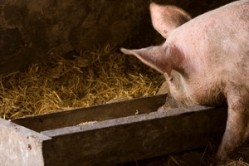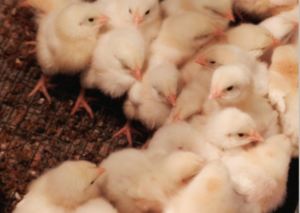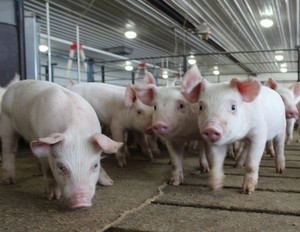PED virus: Is time running out for porcine plasma as a feed ingredient?

Ian Ross, CEO of Ontario-based Grand Valley Fortifiers, said his firm has stopped using porcine origin ingredients including blood meal, blood plasma and pork meal in pig feeds since the contamination was discovered on 9 February.
Testing by the Canadian Food Inspection Agency (CFIA) found the PED virus was present in samples of US-origin plasma obtained by a third-party manufacturer for Grand Valley Fortifiers.
Further testing by the CFIA with a swine bioassay determined that the blood plasma ingredient contained live virus capable of causing disease in piglets.
That government agency is now assessing whether the feed pellets in question are capable of causing piglets to fall ill.
There is no known effective vaccine for the PED virus, which is deadly for nursing pigs but not adult pigs.
The virus has already killed millions of piglets in the US since May 2013. In Canada, cases have been confirmed in Ontario, Prince Edward Island, Manitoba and more recently, in Quebec, on Sunday.
Regulatory collaboration
The pork producer customers of Grand Valley Fortifiers have been hard hit by the virus – deadly for piglets at the nursing stage: “They are left with a hole in their production cycle,” Ross told FeedNavigator.com.
Grand Valley Fortifiers, he said, has been working closely with its customers to support them during the period and has been actively engaged with the government authorities to conclusively determine if its pelleted nursery feeds were contaminated and responsible for the transmission of the virus to its clients' farms.
“We hope the entire feed sector will learn from our situation and join us in this effort to no longer formulate, have manufactured or sell pelleted nursery feed that contains porcine origin ingredients,” said Ross.
PED is not a food safety issue, said the Canadian Swine Health Board, and it poses no risk to other species, although it is considered a serious health threat to the Canadian pig industry if it spreads.
Ross said that while experts continue to assure the feed industry that the PED virus cannot survive the blood plasma manufacturing process, the PED virus may have somehow managed to get through the system.
“We were not concerned about viral transmission from porcine plasma before this,” said Ross, “as various studies provided to us by manufacturers had shown that the spray-drying phase of plasma production deactivates viruses.”
Growth promoter
The North American industry has embraced the use of porcine plasma in feed for years.
“Porcine plasma is not inexpensive but it is highly effective from a growth standpoint in terms of piglets. Some of the antibodies in the blood plasma are also supposed to help boost the immune system of nursing pigs.
"During our new nursery feed line reformulation phase, our consultant nutritionist recommended the inclusion of porcine plasma on the basis that it is also very effective for boosting feed intake,” said Ross.
Prior to the contamination incident this month, Grand Valley Fortifiers “had been using porcine plasma from the same source for the past two years in our nursery feed lines without any problems,” he added.
The company had, however, removed porcine plasma from its vitamin and mineral premix lines five years ago due to the fact it was targeting a global market with those products, said the CEO.
Porcine blood products are safe, say producers
The North American Spray Dried Blood and Plasma Producers (NASDBPP) said the scientific evidence to date indicates that spray-dried plasma is safe.
The trade group said yesterday that the results of the CFIA bioassay do not indicate the source of infective virus present in the sample tested.
Commercial plasma produced following Good Manufacturing Practices (GMP) has never been shown to be infective, said NASDBPP.
The trade group said that the potential exists for post-processing contamination of this sample. “Consequently NASDBPP is undertaking a thorough investigation into all possible ways this could have occurred.”
NASDBPP said it “will continue working to understand processing conditions and safety issues related to spray-dried blood products and will fully cooperate with government officials in both the US and Canada in the investigation.”















